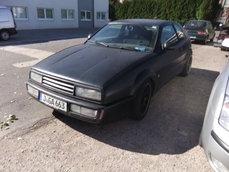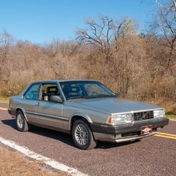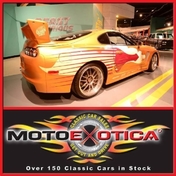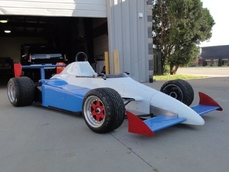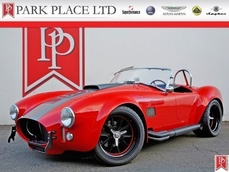Volkswagen Corrado G60 1990
General description :
1990 Volkswagen Corrado G60Supercharged Extremely hard-to-find Nugget Yellow (code LK1B) Black interior with gray seat inserts 1.8L supercharged inline four-cylinder engine Five-speed manual transmission Only produced for four model years with just more than 17,000 examples sold in the United States Sunroof Active rear spoiler that raises at 45 mph and lowers at 15 mph Recently serviced with new tiresThe European sports car with the Volkswagen difference has arrived at Mot Xotica Classic Cars, a 1990 Volkswagen Corrado made in Osnabruck, West Germany in September 1989. This is the very desired G60 supercharged model finished in correct special edition Nugget Yellow exterior. This is a great and clean example which are very hard to come by today as everyone really enjoyed these cars but ending up trashing them.The Corrado was Germanys gut punch to the Honda Prelude, Mazda MX-6, and Mitsubishi Eclipse. Its a type of vehicle that is now virtually extinct, but proliferated 20 years ago from virtually all carmakers, especially the Japanese.We look to the 1990s as a time of modern comforts coupled with impressive performance and experimental technology. The Corrado, among other cars of its day, represents the pinnacle of these absurdly complex, cool coupes the SUV-crazed auto industry d snt have the guts to sell these days.Dressed in the extremely hard-to-find Nugget Yellow paint and black trim are in very good order, while the windows are clear and crack-free. The rear window includes an electric defroster and a back wiper/washer. The cars lights are in overall good order, as are the new tires, sized 195/50R15, which are mounted on the original wheels.The cars body panels are straight and solid, including the sunroof. The engine bay is tidy, the bumpers look very good and the battery is in good order.Beneath the hood is a 1.8L supercharged inline four-cylinder engine, buttoned to a five-speed manual transmission. Known as the G-Lader, the term comes form the superchargers shape, which looks like a capital G and its name in German, lader. The displacer's spirals are 2.34inches deep.Drivers convenience features include, air-conditioning, power steering, power brakes, power mirrors, power windowsInside, the black front bucket seats with gray inserts are in good shape, as is the matching carpet, headliner, instrument panel with its VDO gauges and four-spoke steering wheel. The inner door panels are in decent condition, while the mirror glass, center console and shifter are in good order. Completing the interior is a VW Heidelberg AM/FM stereo with cassette deck.The Corrado was a three-doorhatchback/liftbackwith a2+2seating layout that replaced the Scirocco in the Volkswagen lineup in some markets. The car's floorpan is based on theA2 platform(i.e. MK2 Golf/Jetta) and, with the exception of VR6 models, all versions use the subframes, suspension, steering and braking components from the A2 model range.The Corrado is recognizable by its wedge profile, flush mounted windows and active rear spoiler that raises automatically when the car exceeds 45mph in the North American market and automatically retracts at speeds below 15 mph or it can be manually controlled from a switch in the cockpit.Launched in late 1988 (three years before the end of Scirocco production), all Corrados werefront-wheel driveand featuredpetrol engines. The Corrado debuted with tw nginechoices: a 1.8-litre16-valveinline-fourwith 136hp and asupercharged1.8-litre eight-valve inline-four, marketed as the G60. TheCorrado G60is named for theG-Laderwith which it is equipped, ascrollsupercharger whose interior resembles the letter "G".Another variant is Volkswagen Motorsport (VWMS) Corrado 16VG60. Although the 16-valve engine combined with the original G-Lader was appreciated within the enthusiast community, the model never saw series production. It is generally believed that only two factory-built examples were manufactured, both in Nugget Yellow.Competition to this Volkswagen in 1990 included Acuras Integra GS, Audi Coupe Quattro, Chevrolets Beretta GT, Dodges Daytona, Fords Probe GT, the Geo Storm GSi, Hondas Prelude Si, Mitsubishis Eclipse and Nissans 240SX hatchback.This car is currently located at our facility in St. Louis, Missouri. Current mileage on the odometer shows 148,968 miles. It is sold as is, where is, on a clean and clear, mileage exempt title. GET OUT AND DRIVE!!!VIN: WVWDB4501LK004076Note: Please see full terms and conditions listed below that pertain to the purchase of any said vehicle, thank you.
1990 Volkswagen Corrado G60 is listed for sale on ClassicDigest in Bellevue by Specialty Vehicle Dealers Association Member for Not priced.
Car Facts
Car type : Car Make : Volkswagen Model : Corrado Model Version : G60 Engine size : 0.0 Model Year : 1990 Location : 13710 NE 20th Street Bellevue, WA 98005 Vehicle Registration : Undefined
Not priced
Seller Information
Specialty Vehicle Dealers Association
Specialty Vehicle Dealers Association Member, Contact no. +1-6366004600
Specialty Vehicle Dealers Association Member, Contact no. +1-6366004600
People who viewed this Volkswagen Corrado also viewed similar Volkswagen listed at ClassicDigest
Other cars listed for sale by this dealer
About Volkswagen
The Volkswagen story is indeed an intriguing tale of innovation, resilience, and post-war revival, marked by various models that have become iconic in automotive history.The People's Car (Volkswagen): Initially envisioned by Adolf Hitler in the 1930s as a "people's car" or "Volkswagen" in German, the idea was to create an affordable and practical vehicle for the German people. This concept led to the development of the Volkswagen Beetle (or the Type 1), designed by Ferdinand Porsche.
Post-War Challenges: After World War II, Volkswagen faced significant challenges. The factory was heavily damaged, and the brand's association with the Nazi regime led to a lack of interest in the car in some regions.
British Intervention - The British Army & Ivan Hirst: The British Army took control of the factory in the immediate post-war period. Major Ivan Hirst, a British Army officer, played a crucial role in reviving Volkswagen. He recognized the potential of the Beetle and advocated for its production, convincing the British military to order several thousand cars. This decision helped jumpstart the brand's revival.
Export Success and the Beetle's Global Appeal: The Beetle gained popularity not only in Germany but also globally, becoming an icon of affordable motoring. Its simple, reliable design and unique appearance made it a favorite among consumers worldwide.
Model Evolution: Over the years, Volkswagen introduced various models alongside the Beetle, each contributing to the brand's growth:
Type 2 (VW Bus or Transporter): Introduced in the 1950s, it became an iconic symbol of the hippie movement in the 1960s, loved for its spaciousness and versatility.
Golf (Rabbit in the U.S.): Launched in the mid-1970s, the Golf (or Rabbit in the U.S.) marked a shift towards front-wheel-drive, modern design, and hatchback practicality, becoming a cornerstone of the brand's success.
Passat, Jetta, and Other Models: Volkswagen expanded its lineup with models like the Passat and Jetta, catering to different market segments.
Challenges and Innovations: Despite success, Volkswagen faced challenges, including quality issues in the 1970s. However, the brand continued to innovate and develop new models and technologies.
Rise of the GTI and Global Expansion: The 1980s saw the rise of the iconic Golf GTI, a high-performance version that sparked the hot hatch trend. Volkswagen also expanded its global presence during this period.
The British intervention in reviving Volkswagen after World War II played a pivotal role in the brand's resurgence. While there might have been some tensions or competition among automotive companies in the 1950s and 1960s due to Volkswagen's post-war success, the brand's ability to produce innovative and popular models solidified its place in automotive history.









